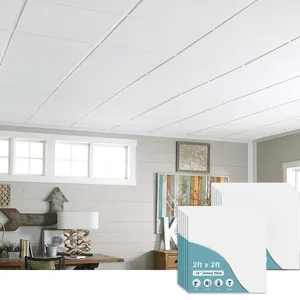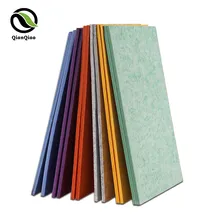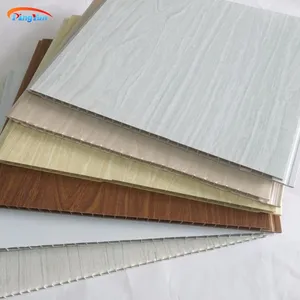Exploring Suspended Ceilings
Suspended ceilings, also known as drop ceilings, offer a blend of aesthetics and functionality for various commercial spaces. This architectural design is characterized by a secondary ceiling hung below the main structural ceiling. Beyond their visual appeal, these ceilings serve to conceal infrastructure elements such as plumbing, electrical wiring, and HVAC systems, contributing to a neat and organized space.
Types and Materials
The versatility of suspended ceilings is evident in the array of materials and types available. Common materials include styrofoam and acoustic panels, which are favored for their sound-absorbing qualities, enhancing the acoustic performance of a space. Metal options, such as tin ceiling panels, are prized for their durability and embossed designs, which add a touch of historical elegance. Wood ceiling panels are another popular choice, offering a timeless and warm ambiance.
Applications and Environments
Different environments necessitate specific types of suspended ceiling tiles. Commercial settings, such as offices, often opt for basic grid ceiling tiles for their simplicity and ease of maintenance. In contrast, environments sensitive to noise, like music studios and restaurants, benefit from soundproof ceiling tiles that contribute to the desired atmosphere. The adaptability of suspended ceilings also extends to residential spaces, where they can enhance studies and dens with a cozy and inviting feel.
Features and Advantages
The functional benefits of drop ceiling grids are manifold. They facilitate easy access to the building's infrastructure for maintenance and repairs, while also providing improved acoustics and thermal insulation. The design flexibility of suspended ceiling systems allows for customization to fit any room size and shape, making them a practical solution for both renovation and new construction projects.
Environmental Considerations
In today's eco-conscious market, the environmental impact of building materials is a significant consideration. Many suspended ceiling panels are made from recyclable materials, contributing to a building's sustainability credentials. Additionally, the insulation properties of these ceilings can lead to energy savings by reducing heating and cooling requirements.
Choosing the Right Suspended Ceiling
Selecting the appropriate suspended ceilings for a project involves considering the specific needs of the space, including aesthetics, acoustics, and environmental factors. Alibaba.com hosts a diverse range of options to suit various commercial and residential applications. Prospective buyers can browse through an extensive collection to find the right fit in terms of style, material, and functionality, ensuring that every space can be tailored to its unique requirements.











































 浙公网安备 33010002000092号
浙公网安备 33010002000092号 浙B2-20120091-4
浙B2-20120091-4